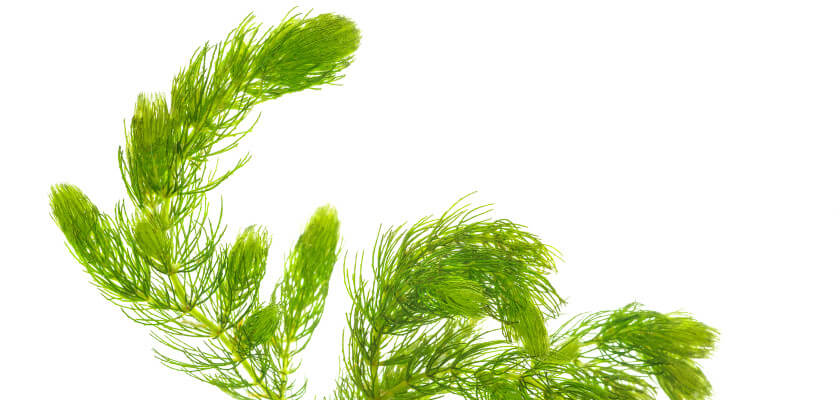Fish and other aquatic animals need a suitable living environment. Green is essential to create it. Not all aquarium plants are equally easy to grow. The toll-ring is one of the few exceptions that not only does not have high requirements, but also works great in most tanks. How to plant a toll? What does a water barrier look like? See for yourself!
Stiff toll-gate – origin
The hornet is a common plant in temperate climates. In nature, it is also found in Poland, mainly in lowland areas. For this reason, it works well in ponds. Especially often it grows in stagnant waters, with relatively constant levels. Sometimes it can also be found in rivers and canals where the current is not strong and the water flows slowly.
Importantly, due to the adaptation to life in water, tollbooths may pose a threat to other plant species. It grows very quickly and perfectly adapts to the growth in each part of the tank. If it is located next to the water surface, it can effectively cut off access to sunlight for other plant species. The gate itself, even with the shading of the lower parts, continues to grow.
Water toller – appearance
As an aquarium plant, tolls have a distinctive appearance. It grows in so-called fields, mainly where the water movement is small and there are no currents. For this reason, it is perfect for artificial, standing tanks.
Tails take the form of very long stems, which can be even over a meter long – in natural conditions. In aquariums, they usually do not grow to this size due to the lack of opportunities and space, as well as the control of the aquarist. The shoots are very strongly branched, and the leaves are arranged radially and vigorously. Due to the considerable stiffness of the shoots, this species is also known as the stiff toller.
The tornado has a green color, usually a slightly less intense shade. The leaves at the tips are slightly sharp, ending like spikes. It is hard to see with the naked eye, but to the touch of the gate it is a bit rough.
Tails – the aquarium will benefit from it
Ceratophyllum demersum is often the species of choice for its effects on the rest of aquatic organisms. This plant is perfect for tanks that tend to develop algae. This is because tolls compete for the nutrients that the algae need to grow. Moreover, as it expands, it secretes compounds that are harmful to them.
However, in the case of tanks with a very high content of fertilizers and nutrients, tolls are a medium for thread algae. They can then overgrow it, which gives an unsightly effect. Regularly check the water parameters to avoid similar problems.
Very often, water tolls are also recommended for multi-species reservoirs, with a cast of various sizes. Due to its characteristic structure, small animals hide in the forked leaves. There they are well protected against possible aggressors. For the same reason, small fry also find shelter in the gate.
Tails in the aquarium – cultivation
Due to its nature, it is perfect for freshwater reservoirs. It is suitable for both the background and the foreground. It grows quickly, so you need to regularly trim it. Excessive growth, especially at the water surface, may lead to the weakening of other plants and a reduction in water oxygenation.
Toll-gates – how to plant?
In principle, tolls in an aquarium do not need to be planted. This plant does not produce roots. The lower shoots, however, have grasping properties, because they are equipped with so-called rhizoids. Thanks to this, they catch the surrounding objects, for example roots or large stones. However, the toll gate can just as well just swim in the water – usually at the very top.
How to plant tolls if you want it to grow in one place? It is best to simply immobilize part of the lower shoot under a large object, e.g. a stone.
Tails – reproduction
When it comes to reproduction, tolls is completely hassle-free. It branches very quickly, creating large clusters. Additionally, you can propagate it vegetatively, i.e. by dividing the stem. It is enough to seal it in the right place, and then leave it floating in the water or attach it to the bottom as described above.
Tails – adaptation to life in water and conditions
Due to the fact that it is a cosmopolitan plant, it performs well in various conditions in the aquarium. Tails will be the perfect choice for beginner aquarists. It grows fast, is very durable and resistant to abnormal growing conditions, and it is also effective. It can form entire walls of greenery, which is why it is recommended primarily for reservoirs with a diverse cast, including shoals of small, gentle species of fish.
Tails – for which aquarium?
The hornet is an aquarium plant that will work well in virtually any tank. In a large one, it will guarantee not only rapid growth of vegetation, but also many hiding places. In the smaller one, especially for beginner aquarists, it does not cause many problems. It reproduces easily and is relatively resistant to temporary, unfavorable factors.
The toll-gate for labyrinth fish is especially recommended. Species such as gouramis and rodents form what is known as a foamy nest during spawning. The toll-ring provides excellent conditions for its maintenance. In addition, it also guarantees the protection of the fry in the following stages.
The hornet is an aquatic plant that occurs in temperate climates. Perfect for a pond and aquarium, also for beginner aquarists. Thanks to the easy reproduction and rapid growth of tolls, it forgives many mistakes. At the same time, it creates a green paradise for fish and other aquatic animals

